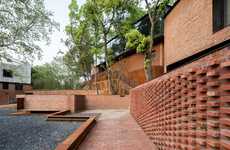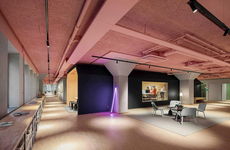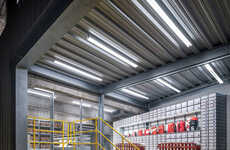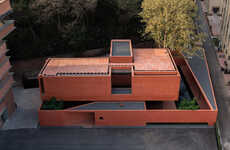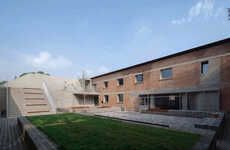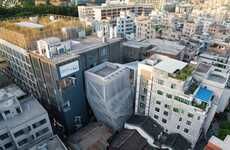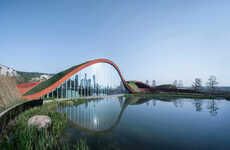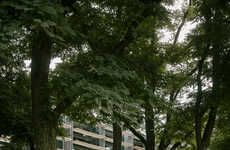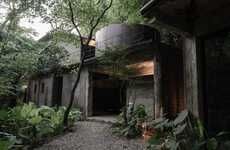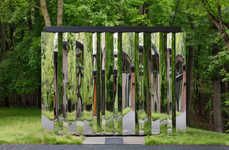
The Superimpose Exhibition Center Preserves Historic Surroundings
Justin Lam — July 6, 2018 — Art & Design
References: superimpose.nl & dezeen
Repurposing spaces has recently become a staple for the architectural community but the new Superimpose exhibition center may just be one of the most gorgeous redesigns of the year. Repurposed from a historic factory in Changzhi, China, the new Superimpose space was dubbed the Re-Veil regeneration project and was completed as a "benchmark for similar cities in China." The factory -- originally founded in 1945 and was used to manufacture bearings during the Chinese Community Revolution -- was in danger of being destroyed until Superimpose stepped in.
The Superimpose exhibition center was built in a manner that preserved at least 70 percent of the building's heritage and was done with the minimum amount of architectural interventions. Structural frames and brickwork were restored instead of replaced and the additional features were introduced to complement these existing elements. All the of the materials used were locally sourced, as was the labor.
The Superimpose exhibition center was built in a manner that preserved at least 70 percent of the building's heritage and was done with the minimum amount of architectural interventions. Structural frames and brickwork were restored instead of replaced and the additional features were introduced to complement these existing elements. All the of the materials used were locally sourced, as was the labor.
Trend Themes
1. Repurposed Factories - The trend towards repurposing historic factory spaces for new and innovative uses presents an opportunity for businesses to preserve heritage while creating unique identities and experiences.
2. Heritage Preservation - Preserving historical buildings and structures presents an opportunity for businesses to tap into the growing market of consumers who value sustainability and heritage preservation.
3. Local Sourcing - The trend towards using locally sourced materials and labor can create opportunities for businesses to reduce their environmental footprint and support local communities.
Industry Implications
1. Architecture and Design - The architecture and design industry can capitalize on the trend towards repurposing historic factory spaces by creating innovative and sustainable designs that preserve heritage while also meeting modern needs.
2. Event and Exhibition - The event and exhibition industry can leverage repurposed factory spaces as unique and memorable venues that offer a blend of history, sustainability, and innovation.
3. Construction and Real Estate - The construction and real estate industry can tap into the growing market for heritage preservation by investing in repurposing historic factories into innovative commercial and residential spaces that prioritize sustainability and local sourcing.
2.7
Score
Popularity
Activity
Freshness


